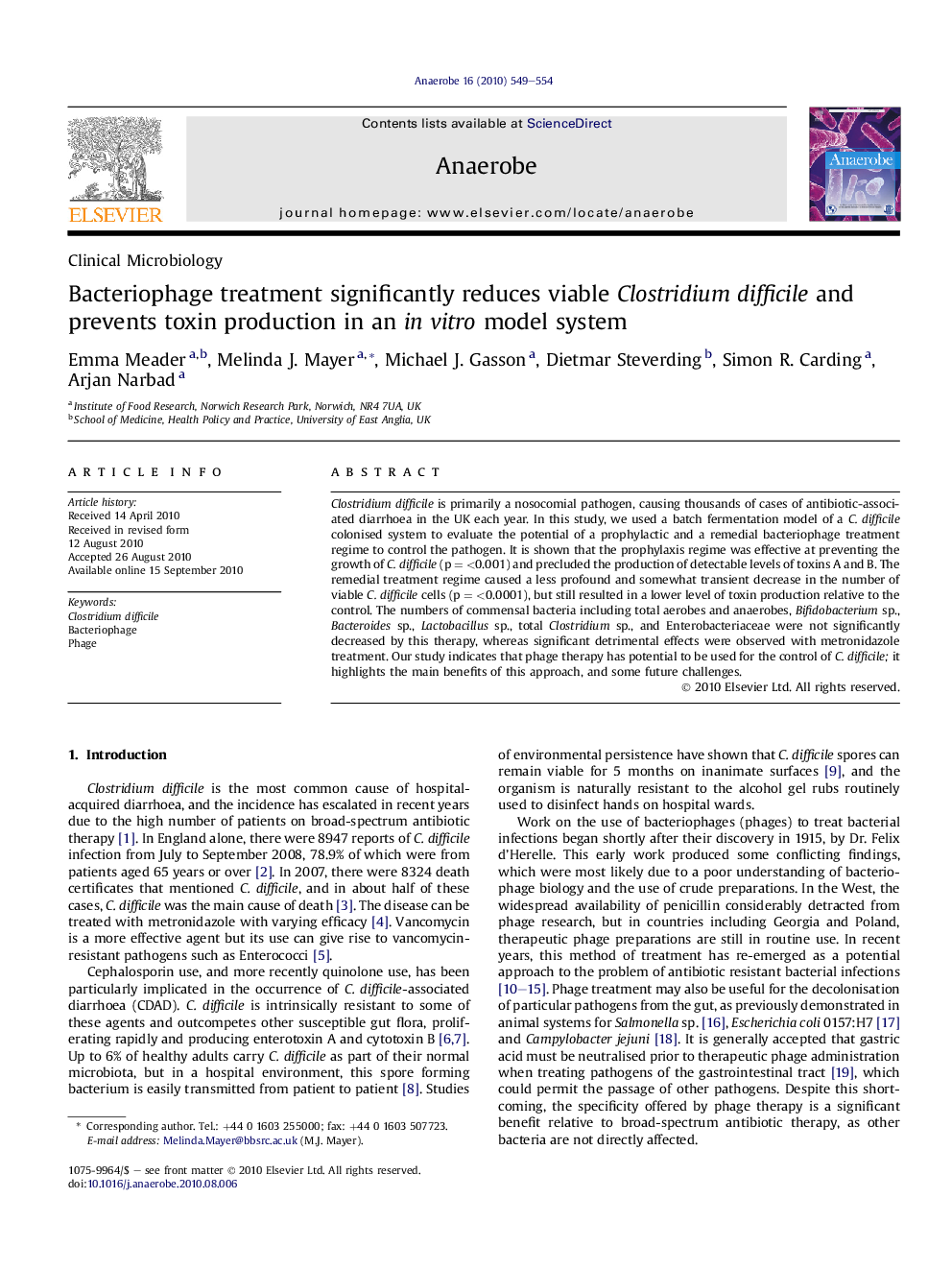| Article ID | Journal | Published Year | Pages | File Type |
|---|---|---|---|---|
| 3395611 | Anaerobe | 2010 | 6 Pages |
Clostridium difficile is primarily a nosocomial pathogen, causing thousands of cases of antibiotic-associated diarrhoea in the UK each year. In this study, we used a batch fermentation model of a C. difficile colonised system to evaluate the potential of a prophylactic and a remedial bacteriophage treatment regime to control the pathogen. It is shown that the prophylaxis regime was effective at preventing the growth of C. difficile (p = <0.001) and precluded the production of detectable levels of toxins A and B. The remedial treatment regime caused a less profound and somewhat transient decrease in the number of viable C. difficile cells (p = <0.0001), but still resulted in a lower level of toxin production relative to the control. The numbers of commensal bacteria including total aerobes and anaerobes, Bifidobacterium sp., Bacteroides sp., Lactobacillus sp., total Clostridium sp., and Enterobacteriaceae were not significantly decreased by this therapy, whereas significant detrimental effects were observed with metronidazole treatment. Our study indicates that phage therapy has potential to be used for the control of C. difficile; it highlights the main benefits of this approach, and some future challenges.
